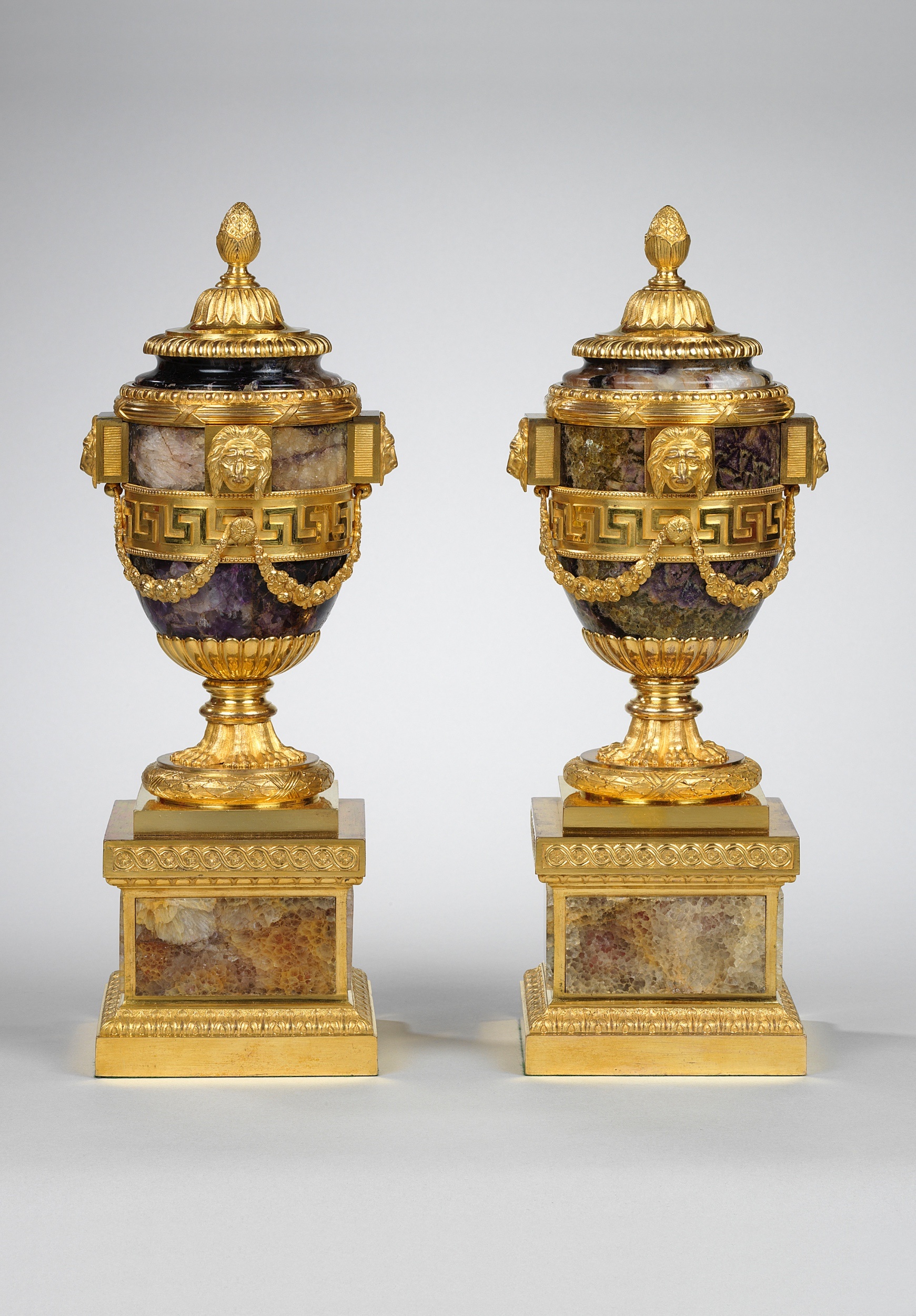

The removable gadrooned and leaf decorated lids with pinecone finials revealing silvered interiors, the bodies with lion masked tablets milled at the sides above key pattern collars hung with floral swags with lobed ornament beneath, on multiple lion feet stems within laurel wreathes, the stepped plinths with guilloche and acanthus borders divided by inset Blue-John panels.
Matthew Boulton and his partner, John Fothergill, founded their metalwork factory in Soho near Birmingham, in the 1760s. The firm produced silver, Sheffield plate and ormolu ornaments and received commissions from a number of leading patrons such as George III and Catherine the Great. Vases accounted for the majority of the firm’s production, which included inkstands, ice pails, tripods, girandoles and obelisks.
The present pair of vases is identical to the pair illustrated in Sir Nicholas Goodison’s book, from The Royal Collection that are housed on one of the chimneypieces in the Marble hall at Buckingham Palace. Similar pairs of vases, with candle arms, belong to a group of closely related examples including one at the Metropolitan Museum, NY and a pair illustrated in Sir Nicholas Goodison’s book Ormolu, page 288, pl 244.
Another similar pair but with straight arms is at Harwood House and two pairs with curved arms were sold at Sotheby’s 5th June 2007, lot 146 and 147.
Provenance:
Ardbraccan, Navan, Co Meath, Ireland.
The Palace of the Bishops of Meath. In the early 1770s Bishop Henry Maxwell, a younger son of 1st Lord Farnham, decided to complete the house; he is said to have boasted that he would build a palace so grand that no scholar or tutor would dare live in it. He obtained designs from Thomas Cooley and also from one of his own clergy who was a talented amateur architect. Both of who were to a certain extent, under the influence of James Wyatt, who produced a sketch of the garden front.
These vases were probably purchased by Lord Farnham when he visited the workshops on 26th July 1771 or are the vases that are recorded as being purchased by Lord Farnham in 1777.
Literature: Sir Nicholas Goodison: Ormolu, London, 2002,
An identical pair from The Royal Collection is illustrated on page 290, Pl 246.
Lord Farnham page 412
Measurements
| Dimensions | CM | Inches |
|---|---|---|
| Width: | 13 | 5 |
| Depth: | 13 | 5 |
| Height: | 35 | 13.5 |